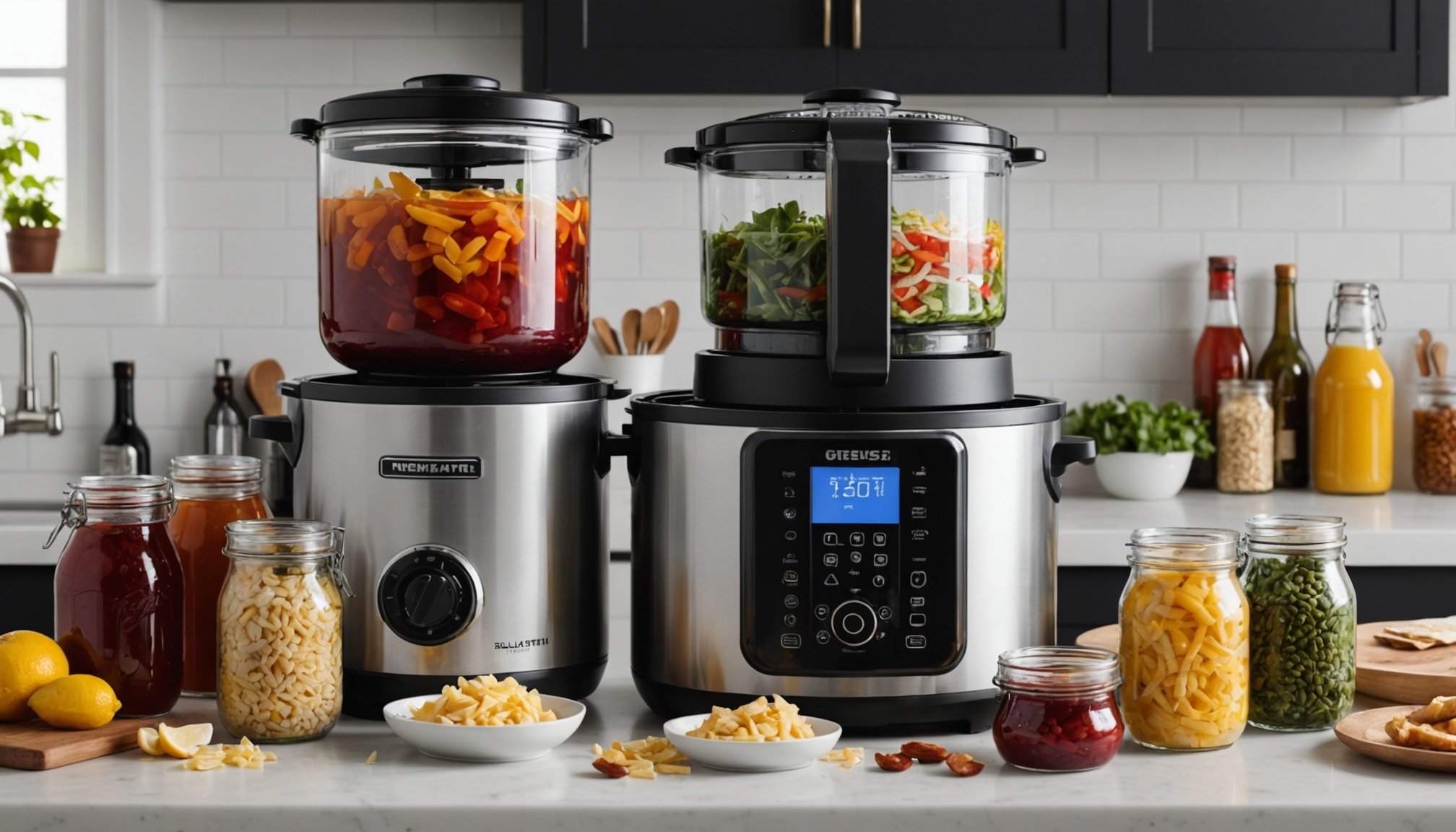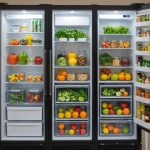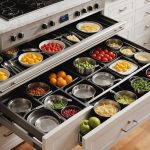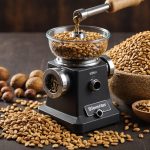Transform Your Kitchen Haven: Create the Ultimate Fermentation Hub
Why Fermentation Matters in Your Kitchen
Fermentation is more than just a trendy cooking technique; it’s a way to unlock the full potential of your food, enhance flavors, and boost the nutritional value of your meals. This ancient process has been a cornerstone of many cuisines around the world, from the tangy kick of Korean kimchi to the rich flavor of Japanese miso soup.
When you incorporate fermentation into your cooking, you’re not just making food; you’re creating a healthier, more vibrant you. Fermented foods are packed with probiotics, which are essential for gut health. As Sandor Ellix Katz, a renowned expert in fermentation, notes in his book “Wild Fermentation,” “Fermentation is a way of engaging with the natural world, of harnessing the power of microorganisms to transform and preserve food.”[1]
Also to read : Transform Your Kitchen Ambiance: The Enchanting Power of Multi-Color LED Lights
Setting Up Your Fermentation Station
To turn your kitchen into a fermentation hub, you need the right tools and a bit of knowledge. Here’s a step-by-step guide to get you started:
Essential Equipment
- Fermenting Crocks and Jars: These are the heart of your fermentation station. Look for high-quality, food-grade materials like stainless steel or ceramic. The Fermenting Crock Pot by Nik Schmitt is a popular choice, praised for its durability and ease of use[1].
- Jar Top Fermenters: These are perfect for smaller batches and can be used with standard mason jars. They ensure that your ferments stay anaerobic, which is crucial for the fermentation process.
- Cabbage Shredder: For making sauerkraut or kimchi, a cabbage shredder is a must-have. The K&K Keramik shredder is highly recommended by fermentation enthusiasts[1].
Tips and Tricks
- Use the Right Salt: Sea salt is preferred over table salt because it doesn’t contain additives that can inhibit the fermentation process.
- Maintain the Right Temperature: Most fermentation processes thrive in temperatures between 64°F and 75°F (18°C and 24°C).
- Keep it Clean: Ensure all your equipment is clean and sanitized before use to avoid contamination.
Choosing the Right Fermentation Projects
Fermentation is incredibly versatile, allowing you to create a wide range of delicious and healthy foods. Here are some popular projects to get you started:
Homemade Kimchi
Kimchi is a Korean staple that combines the spicy kick of chili peppers with the tang of fermented vegetables. Here’s a simple recipe to make homemade kimchi:
- Ingredients:
- 2 lbs napa cabbage, cut into 2-inch pieces
- 2 tablespoons sea salt
- 1/4 cup Korean chili flakes (gochugaru)
- 2 cloves garlic, minced
- 1/4 cup fish sauce
- 1/4 cup rice vinegar
- 1/4 cup water
- 1 tablespoon grated ginger
- Instructions:
- Salt the cabbage and let it sit for 2-3 hours.
- Rinse and drain the cabbage.
- Mix all the ingredients together and pack them into a jar.
- Leave it to ferment at room temperature for 1-5 days.
Making Sauerkraut
Sauerkraut is a classic fermented food that’s easy to make and packed with health benefits. Here’s a simple recipe:
- Ingredients:
- 5 lbs cabbage, shredded
- 1 tablespoon sea salt
- 1 tablespoon caraway seeds (optional)
- Instructions:
- Mix the cabbage and salt together in a large bowl.
- Massage the cabbage until it starts to release its juices.
- Pack the mixture into a fermenting crock or jar.
- Leave it to ferment for 4-6 weeks.
Books and Resources to Guide You
Having the right resources can make all the difference in your fermentation journey. Here are some highly recommended books and tools:
“Wild Fermentation” by Sandor Ellix Katz
This book is a comprehensive guide to fermentation, covering everything from the basics to advanced techniques. Katz’s approach is both scientific and accessible, making it a must-have for any fermentation enthusiast[1].
“Making Sauerkraut” by Klaus Kaufmann & Annelies Schoneck
For those interested in sauerkraut, this book provides detailed recipes and tips. It’s a great resource for both beginners and experienced fermenters[1].
Customer Reviews and Community Feedback
Understanding what works and what doesn’t from other fermenters can be incredibly valuable. Here are some insights from customer reviews:
- Fast Shipping and Quality Materials: Many customers praise the fast shipping and high-quality materials of fermentation supplies. For example, Genda Z. noted, “Shipment was fast, and the packaging was ingenious…”[1].
- Excellent Germination and Growth: For those starting seeds for fermentation, excellent germination rates are crucial. Jogi E. mentioned, “Excellent germination and growth, took a sample flower and it was perfect!”[1].
Health Benefits of Fermented Foods
Fermented foods are not just delicious; they also offer a range of health benefits. Here are some key advantages:
Gut Health
Fermented foods are rich in probiotics, which are essential for maintaining a healthy gut. Probiotics help in digesting food, absorbing nutrients, and even boosting the immune system.
Nutritional Value
Fermentation increases the nutritional value of food. For example, fermented soybeans (used in miso soup) have higher levels of vitamins and minerals compared to their unfermented counterparts.
Reduced Inflammation
Many fermented foods, such as kimchi and sauerkraut, contain anti-inflammatory compounds that can help reduce inflammation in the body.
Plant-Based Fermentation: A New Year, New You
As we enter the new year, many of us are looking to adopt healthier, more sustainable eating habits. Plant-based fermentation is a great way to achieve this:
Plant-Based Recipes
- Miso Soup: Made from fermented soybeans, miso soup is a staple in Japanese cuisine and is rich in probiotics and nutrients.
- Ginger Beer: A fermented drink made from ginger, sugar, and water, ginger beer is a refreshing and healthy alternative to soda.
- Fermented Vegetables: From sauerkraut to kimchi, fermented vegetables are a great way to add probiotics and flavor to your meals.
Food Tech and Fermentation Processes
The world of food tech is constantly evolving, and fermentation is no exception. Here are some innovative trends and tools:
Probiotic Pickle Starters
Products like the Cultured Veggies Probiotic Pickle Starter by Bacillus Bulgaricus make it easy to create fermented foods at home. These starters ensure consistent results and are perfect for beginners[5].
Fermentation Crocks with Advanced Features
Modern fermentation crocks often come with advanced features such as built-in weights, airlocks, and temperature control. These features make the fermentation process easier and more reliable.
Hosting a Fermentation Event: Tips and Ideas
Hosting a fermentation event can be a fun and educational way to share your passion with friends and family. Here are some tips to make your event a success:
Theme and Invitations
- Choose a theme that reflects the diversity of fermented foods, such as a “Fermentation Fiesta” or “Kimchi and Sauerkraut Soiree.”
- Design invitations that look like fermentation jars or include images of fermented foods.
Menu and Recipes
- Offer a variety of fermented foods, including kimchi, sauerkraut, miso soup, and ginger beer.
- Provide step-by-step guides or workshops on how to make these dishes.
Interactive Activities
- Set up a fermentation station where guests can make their own kimchi or sauerkraut.
- Have a tasting session where guests can sample different types of fermented foods.: Your Ultimate Fermentation Hub
Creating a fermentation hub in your kitchen is not just about making food; it’s about cultivating a healthier lifestyle and exploring new culinary delights. With the right tools, resources, and a bit of practice, you can transform your kitchen into a vibrant space where fermentation magic happens.
As you embark on this journey, remember that fermentation is a process that requires patience, but the rewards are well worth the wait. Whether you’re making homemade kimchi, sauerkraut, or experimenting with new recipes, the world of fermentation is full of endless possibilities.
So, go ahead and add that fermentation crock to your cart, grab a book on the subject, and start your new year with a healthier, more flavorful approach to cooking. Your gut, and your taste buds, will thank you.
Table: Comparison of Popular Fermentation Crocks
| Product | Price | Material | Customer Reviews | Special Features |
|---|---|---|---|---|
| Nik Schmitt Fermenting Crock | $142.22 | Ceramic | 4.7/5, 27 Reviews | Built-in weight, airlock |
| Boleslawiec Fermenting Crock | $102.80 | Ceramic | 4.5/5, 10 Reviews | Traditional design, easy to clean |
| K&K Keramik Garopf Fermenting Crock | $133.00 | Ceramic | 4.5/5, 5 Reviews | Modern design, includes recipe book |
Detailed Bullet Point List: Health Benefits of Fermented Foods
- Gut Health: Fermented foods are rich in probiotics, which help in maintaining a healthy gut microbiome.
- Increased Nutritional Value: Fermentation increases the bioavailability of nutrients in food.
- Reduced Inflammation: Many fermented foods contain anti-inflammatory compounds.
- Improved Digestion: Probiotics in fermented foods aid in digestion and reduce symptoms of irritable bowel syndrome (IBS).
- Boosted Immune System: The probiotics in fermented foods can help strengthen the immune system.
- Lower Cholesterol: Some fermented foods, like kimchi, have been shown to help lower cholesterol levels.
- Antioxidant Properties: Fermented foods often contain higher levels of antioxidants compared to their unfermented counterparts.
Quotes and Insights
- “Fermentation is a way of engaging with the natural world, of harnessing the power of microorganisms to transform and preserve food.” – Sandor Ellix Katz, “Wild Fermentation”[1].
- “The slow fermentation process allows the dough to develop a more complex flavor profile and better texture.” – From “The Ultimate Guide To Cristina’s Bakery”[4].
- “Fermented foods are not just delicious; they are also incredibly healthy. They offer a range of health benefits from gut health to reduced inflammation.” – Dr. Michael Greger, Nutrition Expert.











